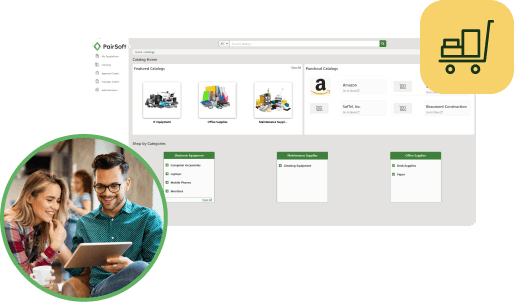Data forms the foundation for digital transformation in 2020
Digital transformation—it’s on the lips and minds of procurement professionals and other business executives across every line of business and every industry in the world. It’s become such a mainstream concept, in fact, that 40% of all technology spending will go toward digital transformations, according to IDC. One recognized measure of a successful digital transformation is an enterprise’s ability to build and leverage a data foundation that informs and steers decision making, strategies and workflows. In actuality, data can be seen as foundational for a company’s digital transformation in 2020 and beyond.
Building data foundations
In its 2019 Activation Guide: Digital transformation through data, Deloitte makes the case for the importance of establishing a data foundation. While the guide’s stated audience is retailers, many of the findings and observations are just as relevant to companies in any industry.
Deloitte describes four core capabilities required to successfully build a data foundation: cultural, skill-based, technological and data-related.
1. Create a data-driven culture
Digital transformation starts with a data-driven culture that begins at the top and promotes extensive cross-departmental collaboration.
- Broadcast a thoughtful data strategy
Does your organization have a data strategy? Do your employees know what that strategy is? Formulating and communicating a data strategy sends a clear message about why and how your organization uses data.
- Become (or appoint) a data leader
A data-driven culture requires a champion. If you’re not a data native, find and enlist some help. Identify cross-functional subject matter experts at varying levels of the organization to help you think through data challenges. Then, continue to leverage the strengths of staff that have an intimate understanding of how data is used in your business.
- Foster collaboration and cross-functional working
Set key performance indicators (KPIs) to measure your overall organizational objectives and share them with stakeholders. Make use of dashboards, alerts, automated workflow routings, and business activity monitoring tools to bring cross-departmental teams into closer communication.
2. Gather the skills you need
Digital transformation requires unique skill sets, including some highly technical skills. Successful organizations must recruit and grow or contract with individuals/consulting firms with the specialized data skills they need. What skills should you be fostering? Naturally, the skillsets your business needs may be different than those of another company, but could include system engineers, security/compliance officers, database managers, business analysts and more.
3. Making technology friendly to all
Deploying the best technologies to incorporate data in your key business functions is fundamental to the success of your organization’s data strategy.
- “Democratize” your data using self-service tools
Self-service tools enable individual employees to independently access the data they need to do their jobs. Teams empowered with hands-on access to data are more likely to uncover new opportunities and identify trends. In addition, self-service tools free up your IT resources for more sophisticated tasks.
- Single source of the truth
Technology is at the core of your organization’s ability to turn data into insights, and when data is stored in disparate applications that lack integration, your ability to access and utilize that data is slowed—or even lost. Investing in a core technology stack with integrated line-of-business applications, such as CRM and procurement and expense management, ensures you have a single source of the truth.
4. Manage the data you have
Data comes to you in more than one way: there’s the data you create in house, data that comes directly from your business partners and data that you may buy or pull from outside sources. As part of building your data foundation, it’s critical that you understand what data you are creating and collecting, where that data is coming from—and where it’s going. Certainly data management is necessary for your internal ability to analyze and make decisions from the data, but it’s also necessary in the wake of data privacy mandates like GDPR and CCPA.
Digital transformation through data in 2020
Digital transformation marks a radical rethinking of how an organization uses technology, people and processes to fundamentally change business performance, says George Westerman, MIT principal research scientist and author of Leading Digital: Turning Technology Into Business Transformation. Building and maintaining an effective data foundation is a vital component in every organization’s digital transformation—in 2020 and into the future. At PairSoft, we’re continually working to bring together technology, people and processes—providing the leading technology tools such as AI and machine learning that help optimize the procure-to-pay cycle and extend procurement visibility throughout the organization.






